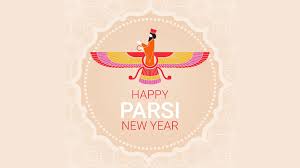Parsi New Year, also known as Navroz or Nowruz, is a vibrant and culturally rich holiday celebrated by the Parsi community. This auspicious occasion marks the beginning of the Zoroastrian calendar and is a time of renewal, reflection, and festivity. In this blog, we will delve into the significance of Parsi New Year, its traditions, and the joyous celebrations that accompany it
1. Historical and Cultural Significance
Parsi New Year has its roots in the ancient Zoroastrian tradition of celebrating the spring equinox. The word "Navroz" itself means "new day" in Persian, reflecting the idea of a fresh start and new beginnings. The holiday holds deep religious and cultural importance for the Parsi community, serving as a time to honor their heritage, values, and faith
.2. Customs and PreparationsLeading up to Parsi New Year, families engage in thorough spring cleaning, symbolizing the cleansing of the old and making way for the new. Homes are adorned with colorful decorations, and traditional items like the "haft-seen" table are set up, featuring seven symbolic items that begin with the Persian letter "S." These items often include sprouted wheat, apples, mirrors, candles, and more.
3. Festive Attire and CuisineParsi New Year is a time for donning new clothes, symbolizing a fresh start and a positive outlook for the coming year. Traditional Parsi garments like the "dagli" and "sar-i-sari" are worn with pride. The holiday is also celebrated with sumptuous feasts that showcase the diverse and delectable Parsi cuisine. Dishes like "sali boti" (a flavorful meat dish), "patra ni machhi" (steamed fish), and "mithai" (sweets) are enjoyed with family and friends
.4. Religious ObservancesParsi New Year is a time for religious rituals and prayers. Community members gather at fire temples to offer prayers and seek blessings for the year ahead. The "Jashan" ceremony is a common practice, involving the offering of fruits, flowers, and other symbolic items to the sacred fire.
5. Cultural CelebrationsIn addition to religious observances, Parsi New Year is celebrated with cultural events and gatherings. Parades, music performances, and traditional dance forms like the "dandiya raas" are common ways to mark the occasion. These celebrations foster a sense of unity and camaraderie among the Parsi community.
6. Embracing DiversityParsi New Year also highlights the multicultural nature of the Parsi community. With its origins in Persia, the holiday has absorbed various cultural influences over time. This diversity is reflected in the customs, attire, and cuisine associated with the celebration
.7. Global ObservanceParsi New Year is observed not only in India but also in other parts of the world where the Parsi diaspora has flourished. Countries like Iran, Pakistan, and the United States host vibrant Navroz celebrations, showcasing the global reach of this festive occasion.
Conclusion
Parsi New Year, or Navroz, is a cherished time of the year for the Parsi community. It is a beautiful blend of religious reverence, cultural heritage, and joyful festivities. As families come together to celebrate new beginnings, embrace their roots, and share delicious meals, the spirit of Parsi New Year shines bright, spreading joy and renewal to all who partake in its celebrations.
Our Latest Posts
- Futuristic Tech You’ll Use Daily by 2025 (and After)
- Metaverse, Web 4.0, and AI Will Redefine 2025 and Beyond
- Trends For Entrepreneur Should Prepare For
- Next Gen Tech : What Will Technology Look Like in 2030?
- Tech Forecast: Game-Changing Trends and Predictions
- Tech for Tomorrow: Sustainability and Innovation Beyond 2025







